Dancers’ feet, often hidden in shoes or ballet slippers, are arguably their most crucial instruments. These incredible appendages, often bearing the marks of relentless practice and performance, are more than just feet; they are the foundation of a dancer’s artistry and career. From soaring leaps to intricate footwork, Dancer Feet are a testament to strength, resilience, and dedication. They are, in essence, a dancer’s prized possessions, regardless of whether they are adorned with perfect arches or bear the battle scars of bunions and blisters. Each foot, a complex masterpiece of muscles and bones, is responsible for executing every nuance of movement, propelling dancers across stages, and supporting them, quite literally, from the ground up.
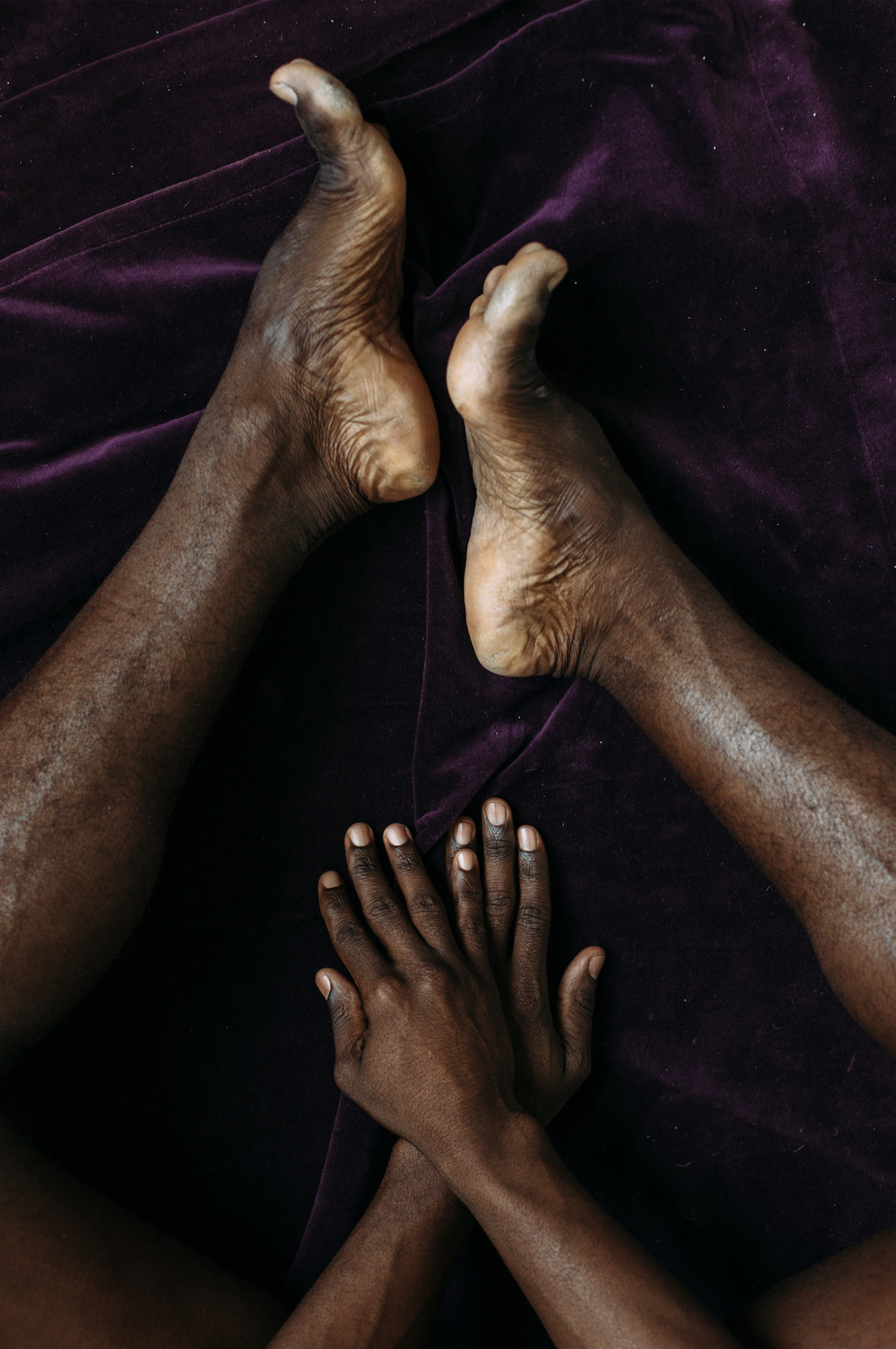 Lloyd Knight of Martha Graham Dance Company showcasing his dancer feet, marked with marley burns and scars, symbols of his dedication and hard work.
Lloyd Knight of Martha Graham Dance Company showcasing his dancer feet, marked with marley burns and scars, symbols of his dedication and hard work.
Lloyd Knight, Principal at Martha Graham Dance Company
For Lloyd Knight, a principal dancer at Martha Graham Dance Company, his feet tell a story of dedication and perseverance. “My feet have been through a lot, and their scars show the work I’ve done so far as a dancer,” Knight reflects. The Martha Graham technique, known for its grounded and often bare-footed style, leaves its mark. “We work so much with bare feet in Graham that I have a lot of marley burns, cuts, and splits. It’s like a badge of honor,” he explains, viewing these imperfections not as flaws, but as symbols of his commitment to his craft.
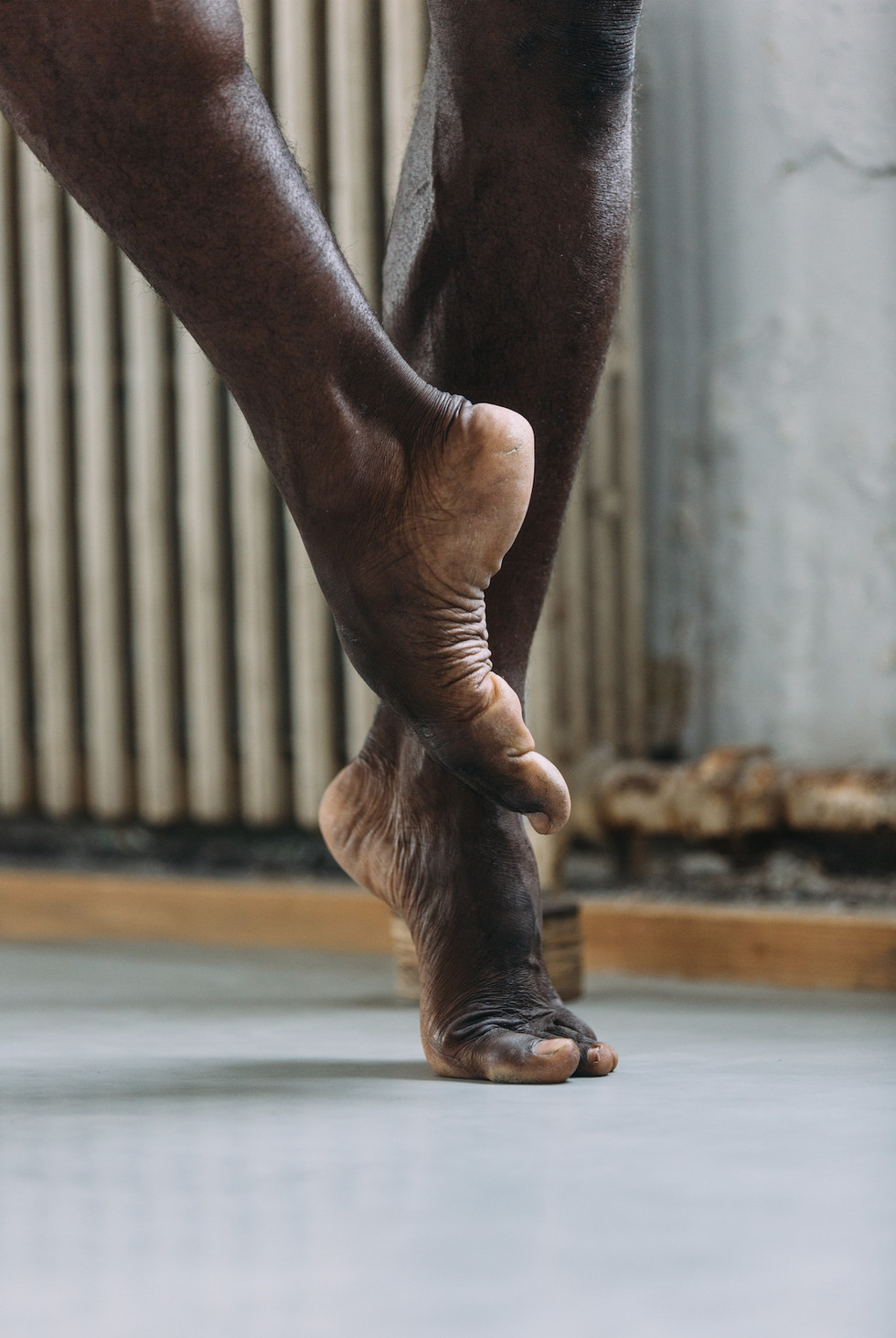 Lloyd Knight describing his Achilles injury, emphasizing the importance of foot care and maintenance for dancers.
Lloyd Knight describing his Achilles injury, emphasizing the importance of foot care and maintenance for dancers.
However, the demanding nature of dance can take its toll. Knight recounts a significant injury: “I tore my Achilles in 2016. I went to jump and it felt like someone kicked me. I even looked to see if someone had, and everyone was staring—they heard it.” The injury sidelined him for nine months, underscoring the vulnerability of dancer feet and the critical need for diligent care.
Since his Achilles tear, foot health has become a paramount focus for Knight. “Maintaining the health of my Achilles has been a major focus since then,” he states. His daily routine is a testament to proactive foot care: “I do TheraBand exercises like toe raises or ankle rolls every day. I roll out on a small ball to get in between the tiny bones. I use a bigger one for the arches. After dancing, I ice and rub on peppermint ointment and eucalyptus oil. I use YogaToes for 30 minutes before bed.” This rigorous regimen highlights the dedication dancers must have to foot maintenance to sustain their careers.
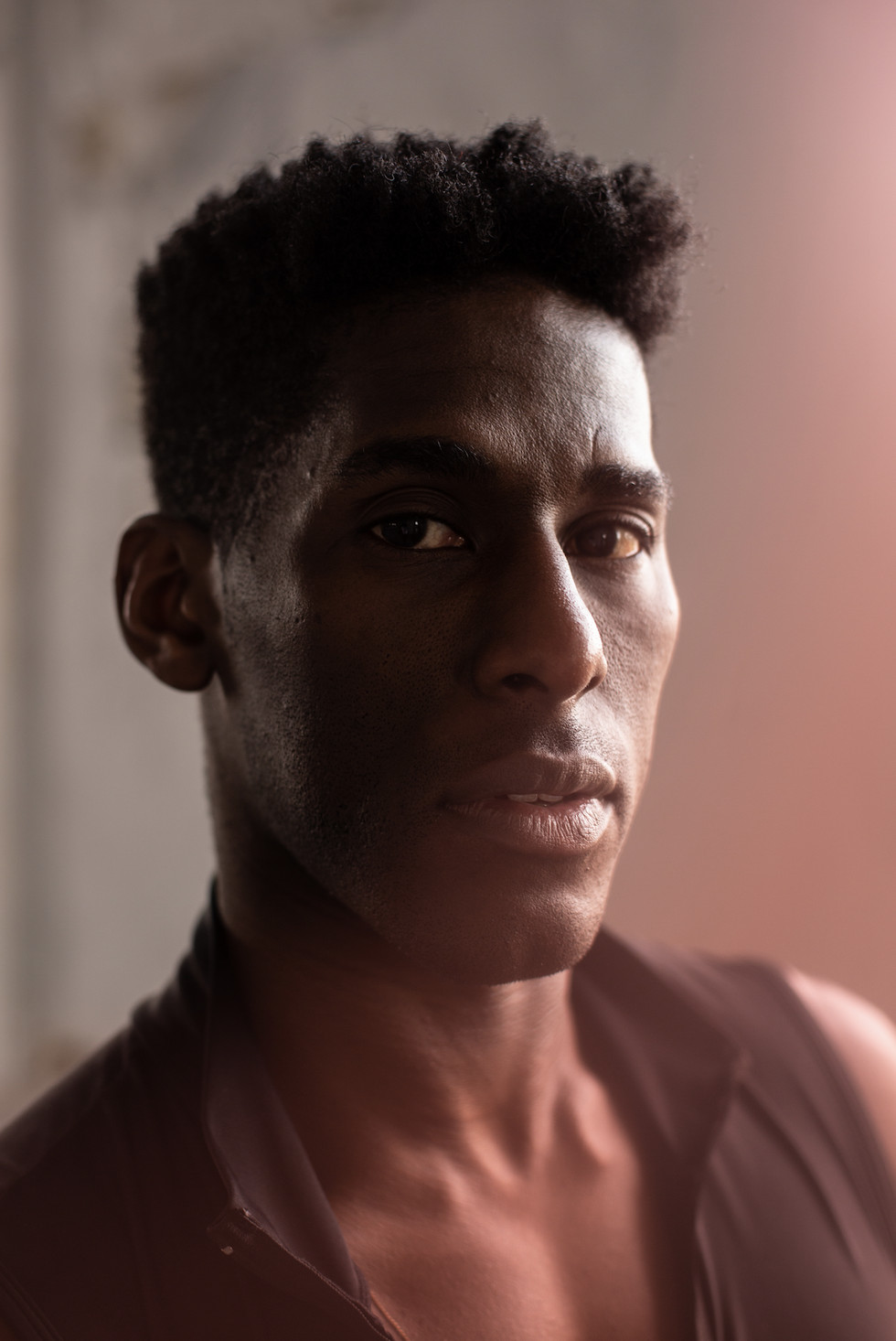 Close-up of Lloyd Knight's arched dancer feet, highlighting the aesthetic and functional importance of foot shape in dance.
Close-up of Lloyd Knight's arched dancer feet, highlighting the aesthetic and functional importance of foot shape in dance.
Despite any perceived imperfections, Knight acknowledges the aesthetic and functional importance of his feet. “People say I have good arches, but I think they could be a little higher. I’ve worked really hard on them. I appreciate that I can finish a line.” His perspective reflects a common dancer sentiment: a blend of self-critique and deep appreciation for the capabilities of their feet.
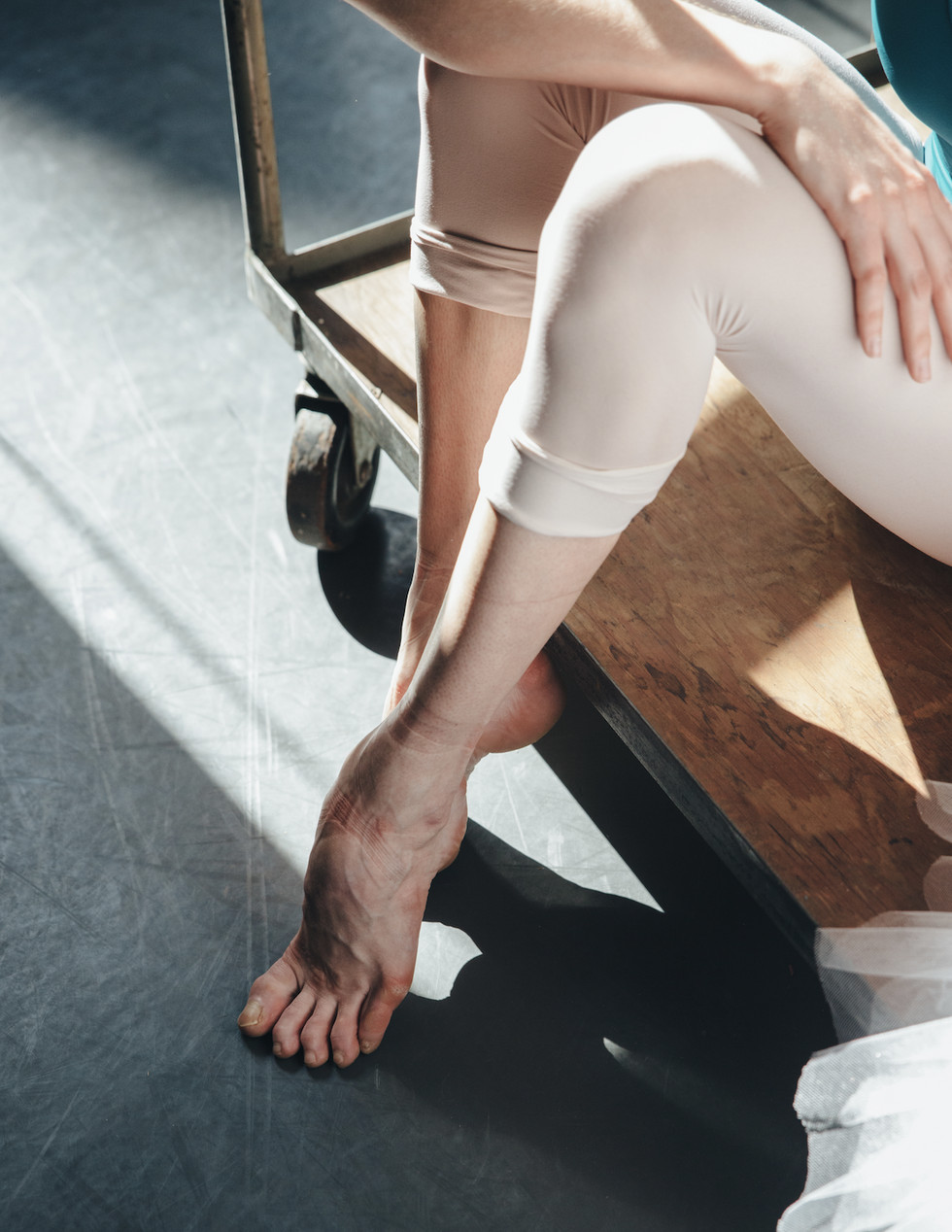 Kathryn Boren of American Ballet Theatre discussing the defining nature of her dancer feet and arches.
Kathryn Boren of American Ballet Theatre discussing the defining nature of her dancer feet and arches.
Kathryn Boren, Corps de Ballet Dancer at American Ballet Theatre
Kathryn Boren, a corps de ballet dancer at American Ballet Theatre (ABT), views her feet as an integral part of her identity as a dancer. “My feet have become my business card. Really, I’m defined by them,” Boren asserts. For ballet dancers, where aesthetics and precise lines are paramount, foot shape and condition are often under scrutiny. “I can pick myself out of blurry rehearsal footage because I can recognize my arches. My right arch is better than my left, which is a complex I’ve had to deal with my whole life.” This intimate awareness and even self-consciousness about their feet is a common thread among dancers.
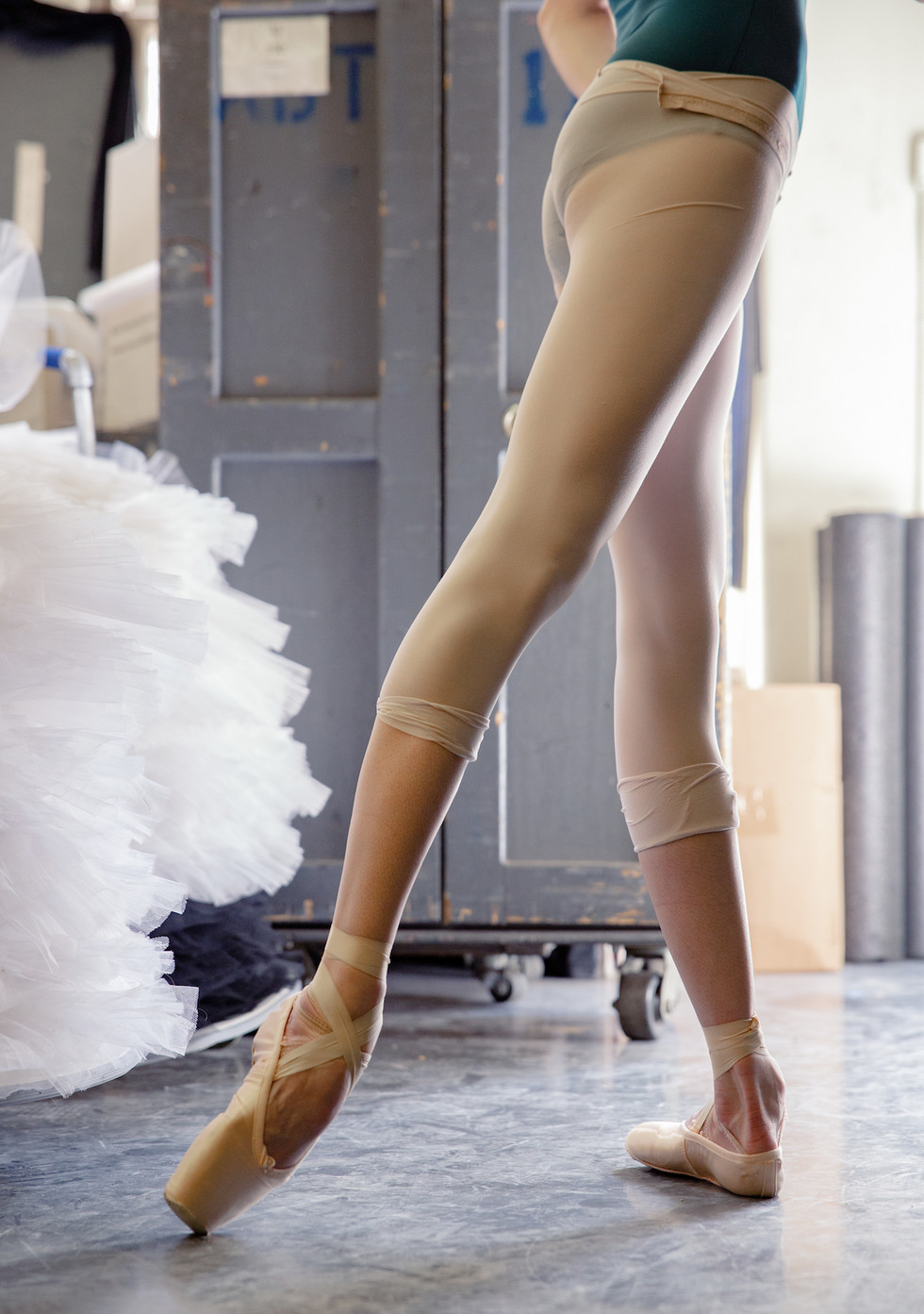 Kathryn Boren's calloused dancer feet, evidence of the rigorous training and demands of ballet, showcasing resilience and adaptation.
Kathryn Boren's calloused dancer feet, evidence of the rigorous training and demands of ballet, showcasing resilience and adaptation.
Despite the pressures of ballet, Boren expresses gratitude for the overall resilience of her feet. “Overall, they’ve been kind to me. I haven’t had a blister in ages because my feet are so calloused.” Calluses, often seen as undesirable, are, for dancers, a protective shield, a testament to the foot’s adaptation to intense training. However, challenges persist. “But my big toes are ginormous, and that makes my big toenails tender spots. Sometimes I put my shoes on for rehearsal and the first five minutes will feel like fire, but I remind myself that once I start dancing, the pain will go away.” This acceptance of discomfort and pushing through pain is often part of a dancer’s daily experience.
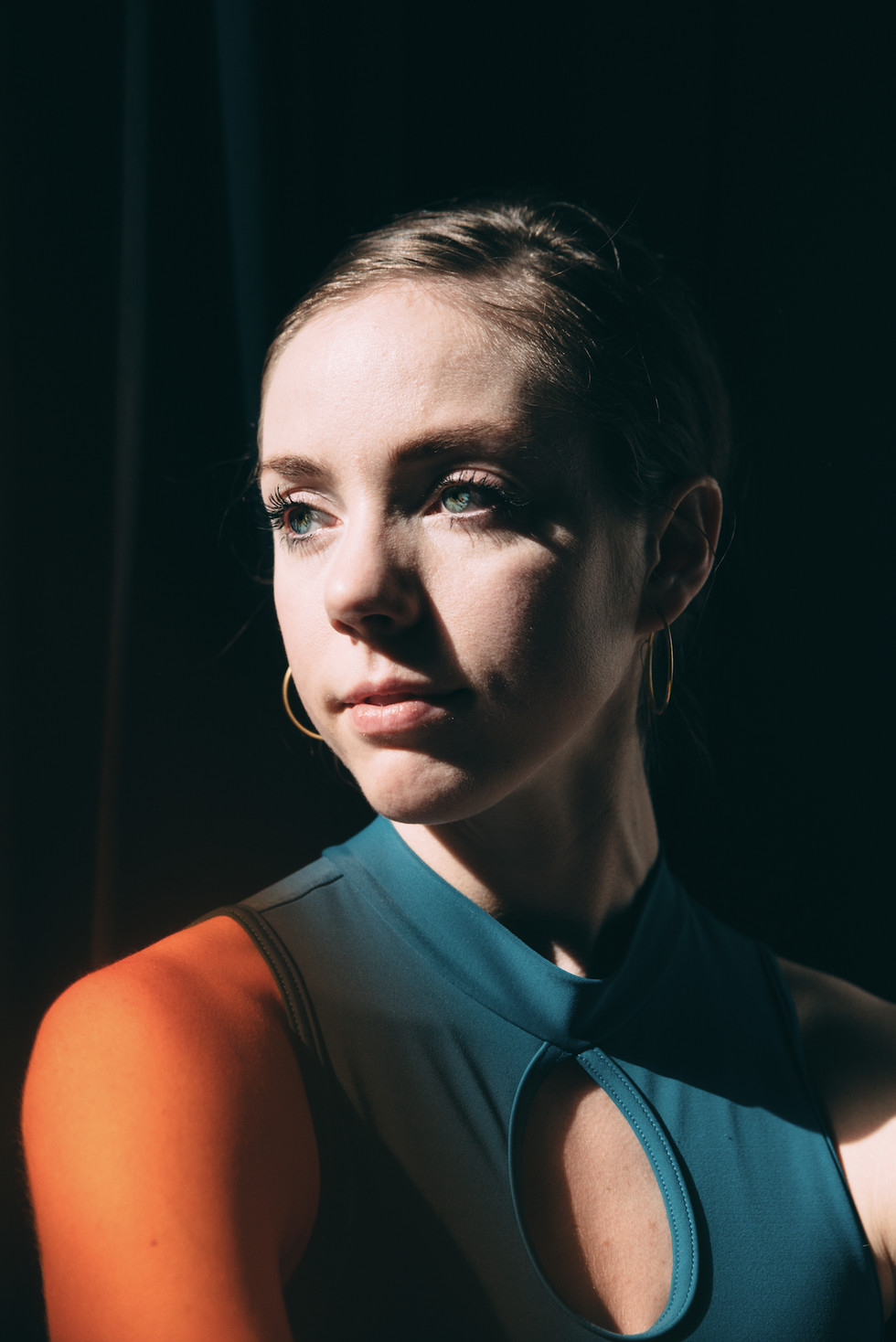 A trio of images showing Kathryn Boren's dancer feet in different positions, highlighting the flexibility and strength required for ballet.
A trio of images showing Kathryn Boren's dancer feet in different positions, highlighting the flexibility and strength required for ballet.
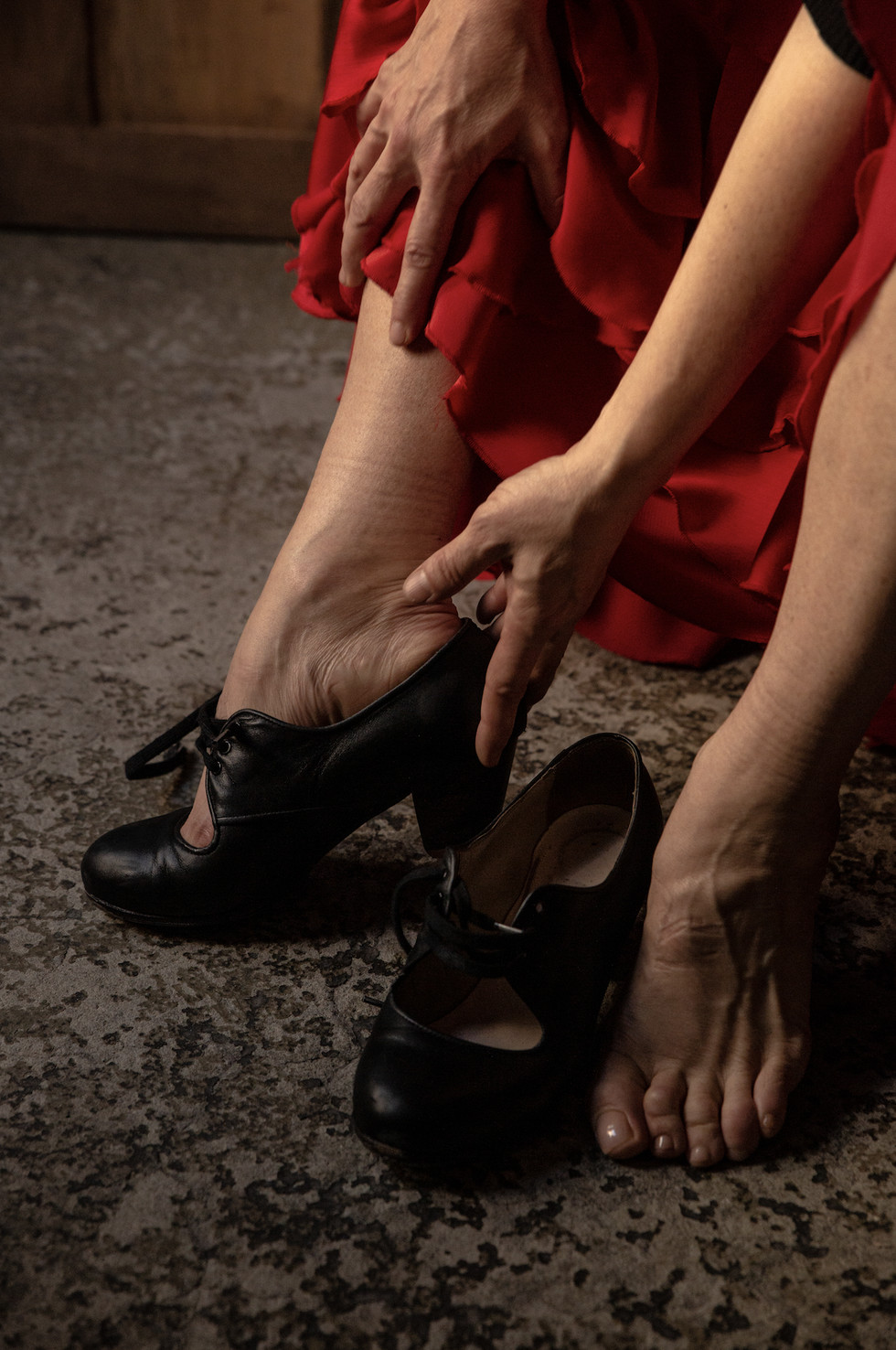 Close up image showcasing the pointed feet of Kathryn Boren, demonstrating the extreme positions dancer feet endure in ballet.
Close up image showcasing the pointed feet of Kathryn Boren, demonstrating the extreme positions dancer feet endure in ballet.
Soledad Barrio, Star of Noche Flamenca
For Soledad Barrio, a star of Noche Flamenca, dancer feet are not just about aesthetics or physical prowess; they are a vital form of communication. “I give messages with my feet to the guitarists and singers to advise them on when to start and when to stop. There is a very clear vocabulary,” Barrio explains. In flamenco, the feet are percussive instruments, driving the rhythm and communicating directly with fellow musicians.
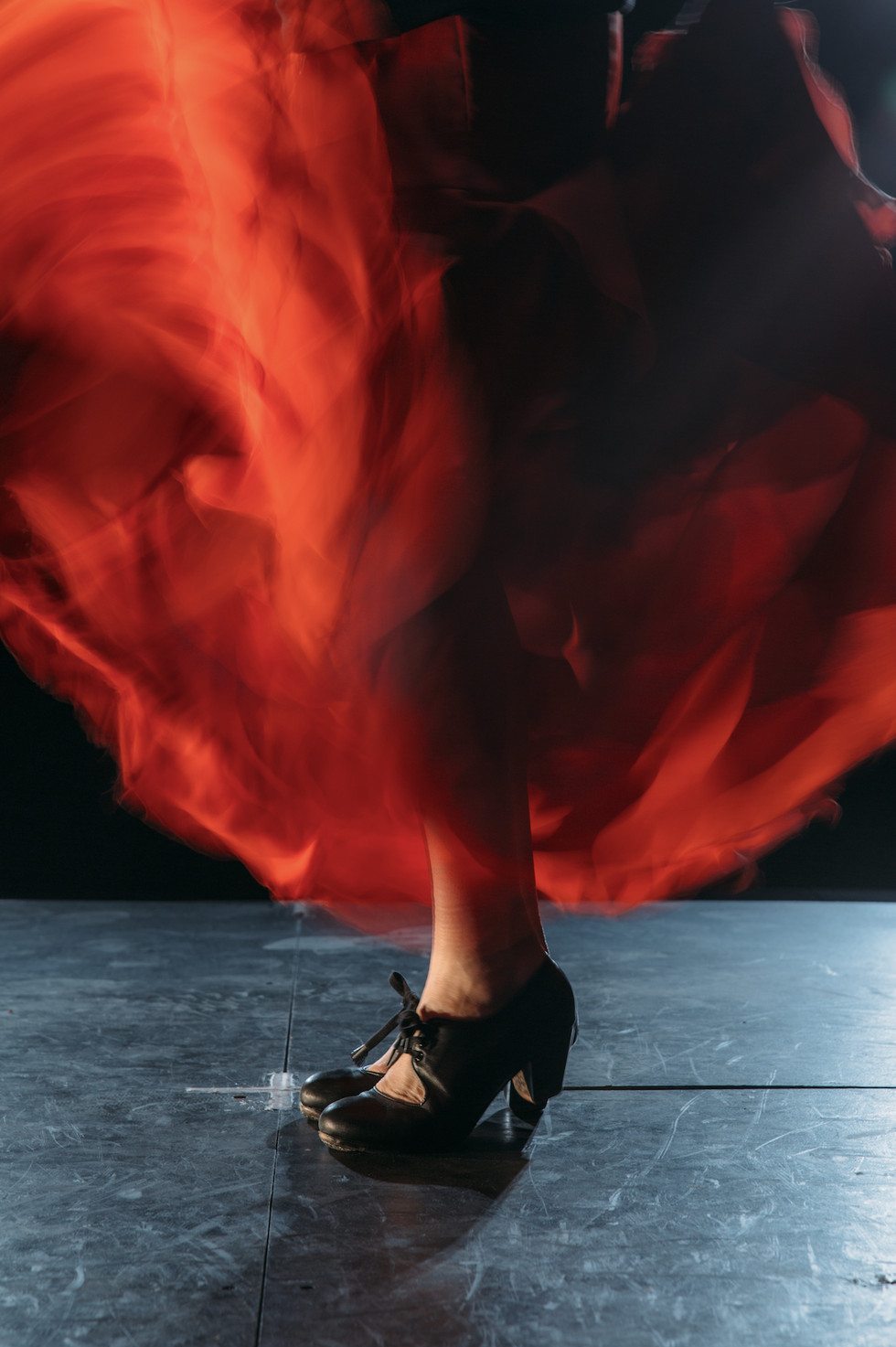 Soledad Barrio demonstrating the expressive feet of a flamenco dancer, conveying emotion and rhythm through movement.
Soledad Barrio demonstrating the expressive feet of a flamenco dancer, conveying emotion and rhythm through movement.
The demanding footwork of flamenco takes a physical toll. “It’s a severe thing for the foot to express the feeling of flamenco,” Barrio states. “The years of hitting my feet into the floor have made them grotesque and inflamed.” She candidly shares her complex relationship with the appearance of her feet: “I don’t like how big mine are because in flamenco, the smaller the feet, the quicker you can move. Physically, I don’t like my feet, but spiritually, I do. They support my body, and my body has my flamenco soul in it. They’re not pretty, but they permit me to dance.” This powerful statement encapsulates the dancer’s duality: acknowledging physical imperfections while deeply valuing the functional and even spiritual role of their feet.
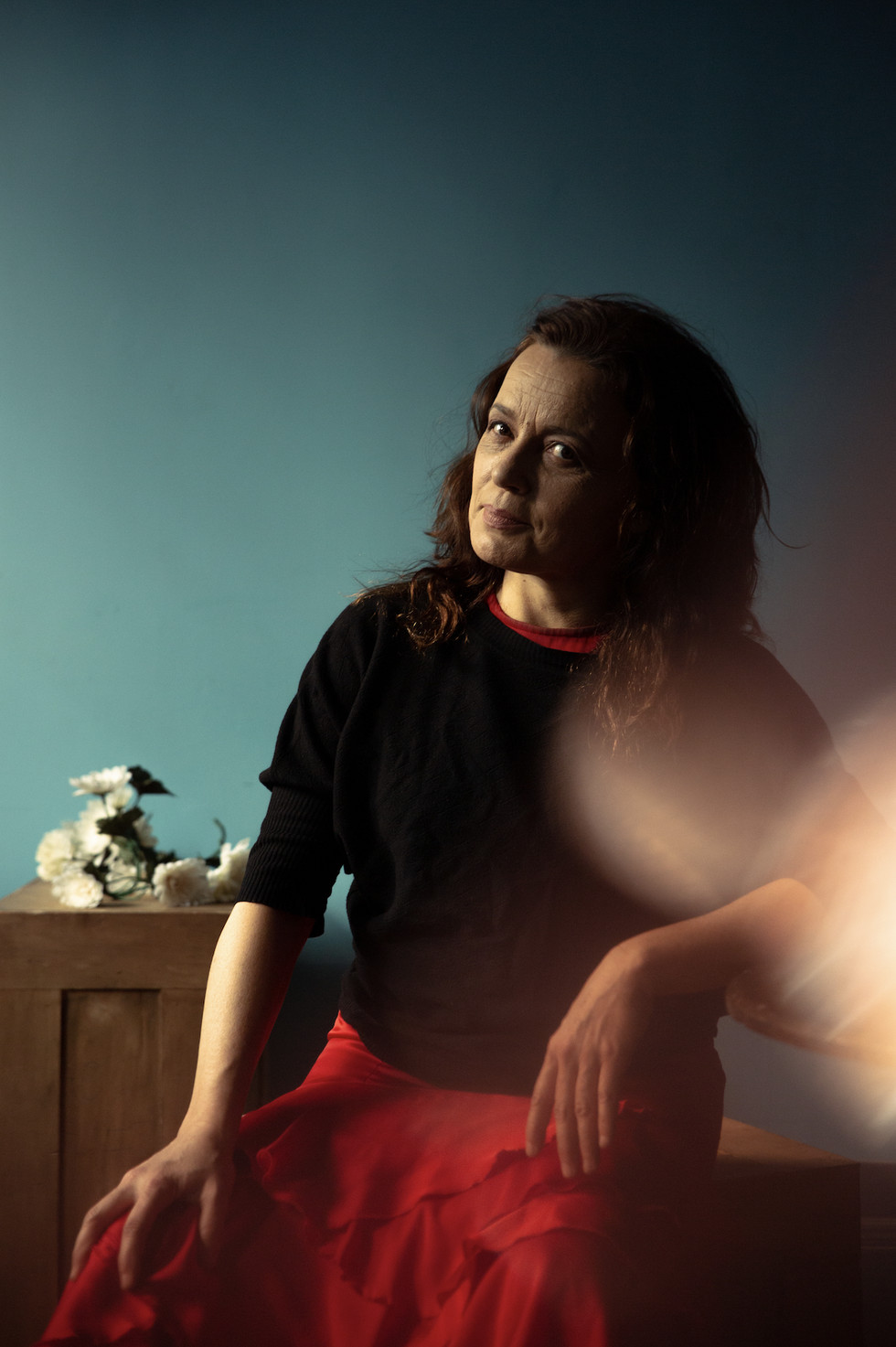 Two images of Soledad Barrio's dancer feet in motion, capturing the intensity and passion of flamenco footwork.
Two images of Soledad Barrio's dancer feet in motion, capturing the intensity and passion of flamenco footwork.
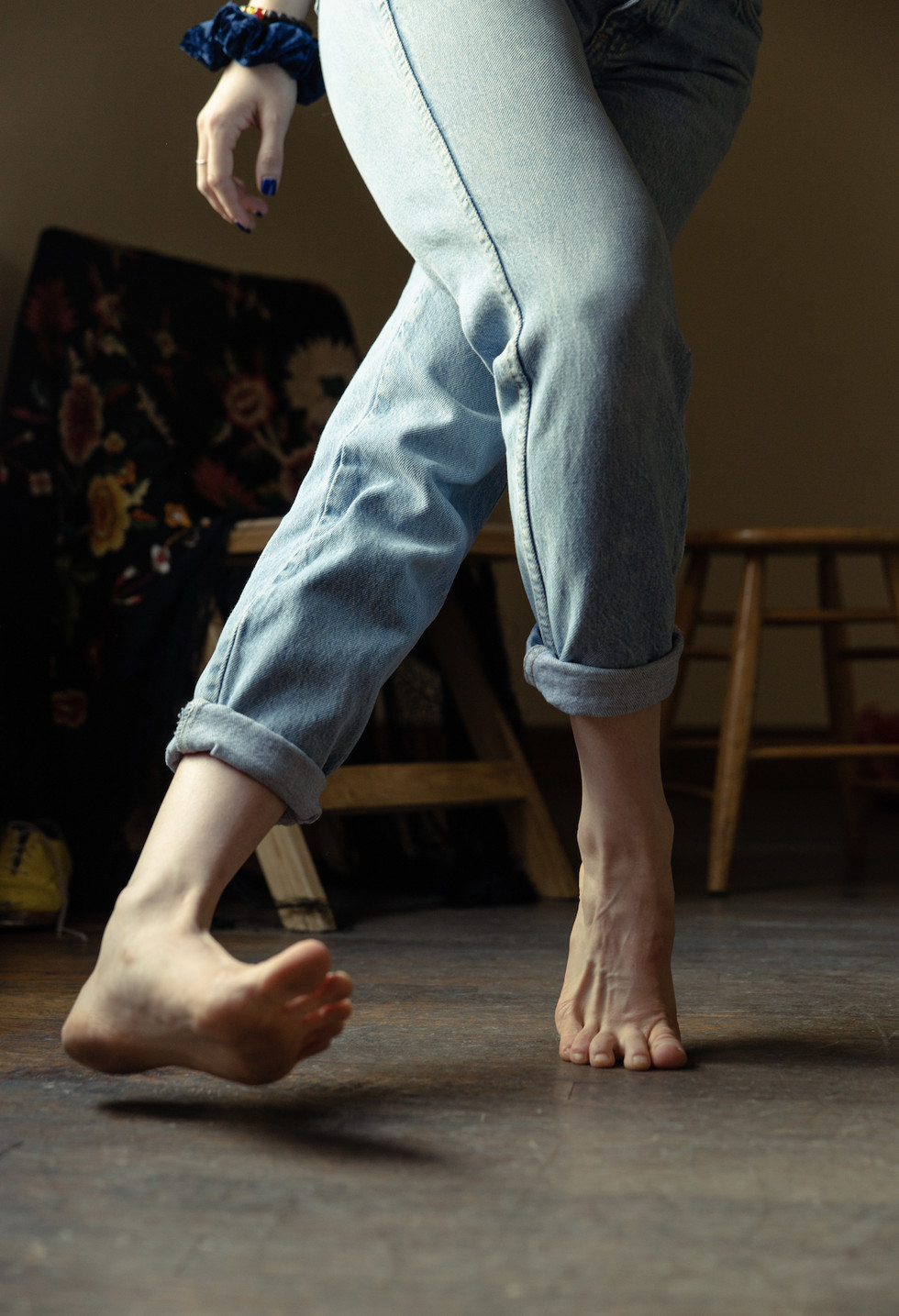 Another dynamic image of Soledad Barrio's flamenco dancer feet, emphasizing the strength and precision required in flamenco.
Another dynamic image of Soledad Barrio's flamenco dancer feet, emphasizing the strength and precision required in flamenco.
Demi Remick, Tap Dancer for Postmodern Jukebox and Caleb Teicher & Company
Demi Remick, a tap dancer who performs with Postmodern Jukebox and Caleb Teicher & Company, faces a different set of challenges. “My feet get injured a lot, so I don’t always trust them,” Remick admits. Tap dance, with its percussive and often improvisational nature, demands both strength and flexibility in the feet and ankles. “As a tap dancer, I need relaxed ankles, and sprains affect that. I have to release them even though I’m scared. But my feet are smarter than I think. I dance on a four-by-four board on tour and my feet memorize the space and what’s possible within it.” This “muscle memory” in the feet is crucial, especially in dynamic and spatially constrained performance environments.
 Demi Remick, a tap dancer, highlighting the importance of foot care for tap dancers and the sounds they create.
Demi Remick, a tap dancer, highlighting the importance of foot care for tap dancers and the sounds they create.
Due to the high-impact nature of tap, foot care is paramount for Remick. “I take care of my feet so they are okay to make the sounds I want. I’m really OCD about it,” she confesses. Her pre and post-performance routines are extensive: “I won’t even go near cold temperatures before a show. I use a foam roller on my calves, and a baby spike ball on the bottoms of my feet every day—especially before performances. After shows I ice them. I wear compression socks on all airplanes. I do toe tapping, relevés off of the stairs, balance work with my eyes closed—you name it. I do way too much maintenance for my feet.” This detailed regimen underscores the proactive and often intense foot care practices many dancers undertake.
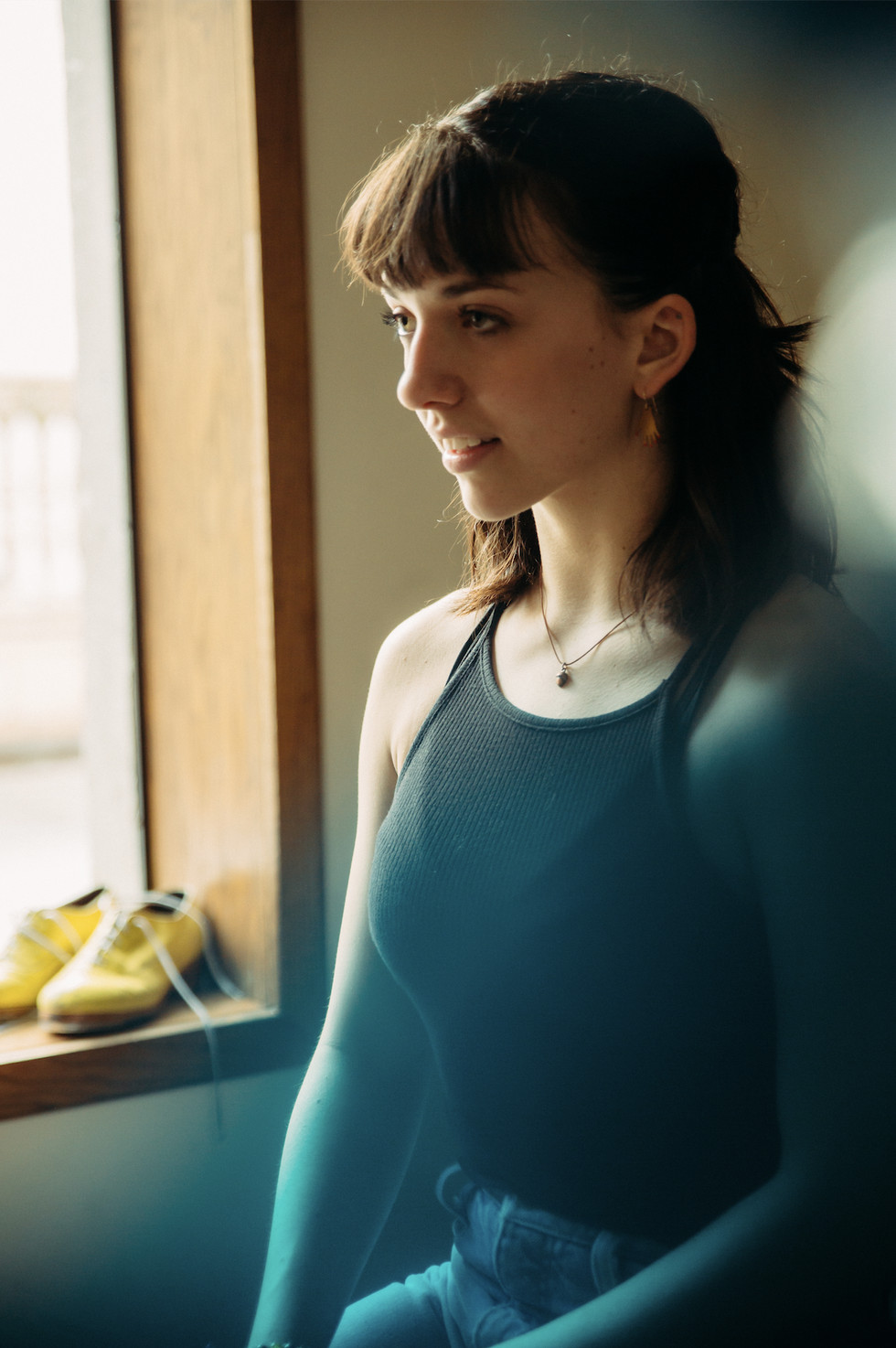 Demi Remick demonstrating tap dancer feet and foot positions, illustrating the controlled and articulate movements required.
Demi Remick demonstrating tap dancer feet and foot positions, illustrating the controlled and articulate movements required.
In conclusion, dancer feet are far more than just anatomical structures; they are the embodiment of a dancer’s journey, dedication, and artistry. Whether adorned with scars of hard work, shaped by rigorous training, or used as instruments of communication, dancer feet are a testament to the incredible demands and rewards of a life in dance. They are cherished, meticulously cared for, and, ultimately, the foundation upon which dancers build their dreams.
